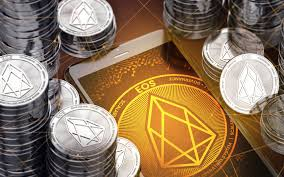The Moment of Truth for EOS - Running the mainnet is here

ICO for $ 4 billion
After the ICO phase, which has earned a record $ 4 billion for this project, EISIO is officially launched. EOSIO's startup could be a crucial moment for a project that promised in its whitepaper that it can process millions of transactions per second and eliminate transaction fees.
What to know about EOS
EOS is a decentralized operating system based on blockchain technology, introduced in 2017. Brendan Blumer and Dan Larimer are the key figures behind this project. Their common goal is to enable developers to build decentralized applications (similar to Ethereum), which can be scalable. This was achieved primarily through parallel processing, allowing the network to process higher-speed transactions.
ERC-20 EOS Token Sales started in June 2017, and as of June 2, 2018, their registered owners can migrate to the new EOS mainnet within the swap token.
Delegated Proof of Stake
EOSIO works on the Delegated Proof of Stake algorithm (DPoS), originally created by Larimer for the Steemit blogging platform. The principle is built on the so-called delegates who are responsible for ensuring the running of the blockchain. Their number is set to 21 and in a sense serves as the "Masternode". Their task is to verify transactions and generate new blocks, which is about every three seconds. The election of these delegates shall be by vote. Each EOS token holder has the option to vote in the "election", with the greater the number of tokens you own, the greater your voice has in choosing. There is no rivalry among the delegates in the form of whoever confirms more blocks. The algorithm of this currency determines minerals proportionally to their share of the votes they have received.
EOSindex
By the time EOS came to the final version of the software, it has gone through several releases from the historical point of view. Noteworthy is Dawn, or the latest beta version of v4.0 released in May this year. According to Github, the project records 620 open questions / suggestions. Compared to this data, more than 1400 queries were resolved during the development phase. This fact can also be taken as evidence that developers have received enough feedback to run the final version.
According to EOSindex, which monitors the number of EOS blockchaine-based decentralized applications, there are already over 140 projects that are actively developing. The most famous of these is Everipedia - an online encyclopedia that rewards developers with tokens. This project was attracted in 2017 by the co-founder of Wikipedia Larry Sanger.
the rest of the money will not be a problem
While the EOS project itself gained over $ 4 billion in its ICO campaign, Block.one was also active. The company has managed to raise another $ 50 million from the investment company SVK Crypto.
This London investment company invests in teams that are building decentralized applications on EOSIO. In particular, it focuses on social media applications, data ownership and logistics.
conclusion
The huge capital that Block.one disposes of promises continuous improvement of EOSIO over the coming years. Since EOS is often compared to Ethere, there is a strong likelihood that the development of popular EOSIO decentralized applications will accelerate its adoption in the future just as it did to its competitor.
However, it is first necessary to successfully complete swap tokens to ensure that users continue to be able to select delegates for verification of transactions. Without this basic DPoS algorithm, EOSIO will not work.

Thank you very much for your support!
Counting the hours! Greetings from #EOSVenezuela